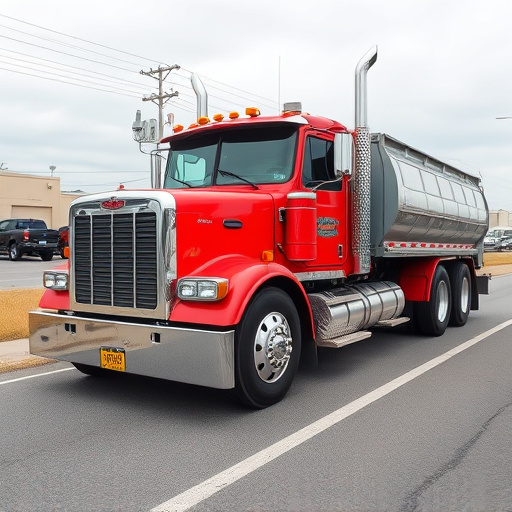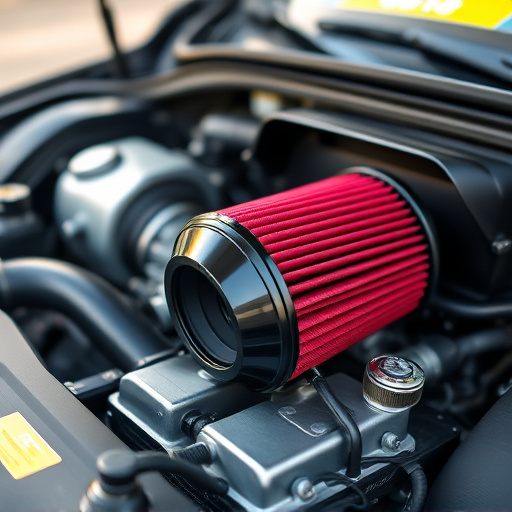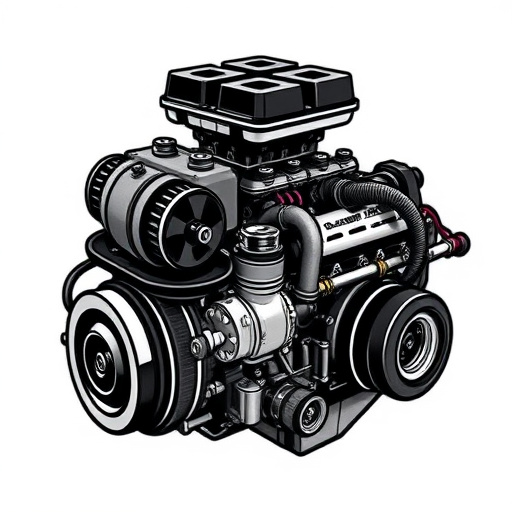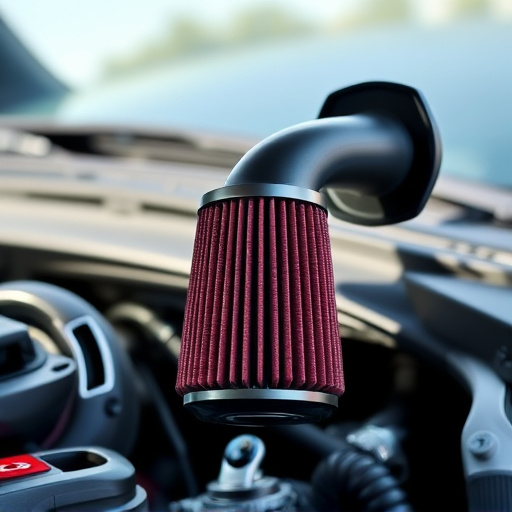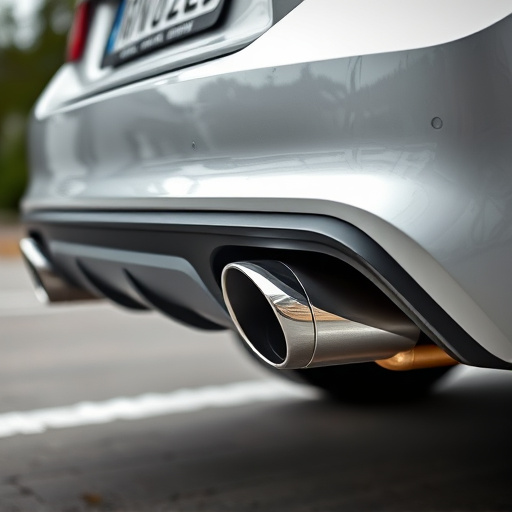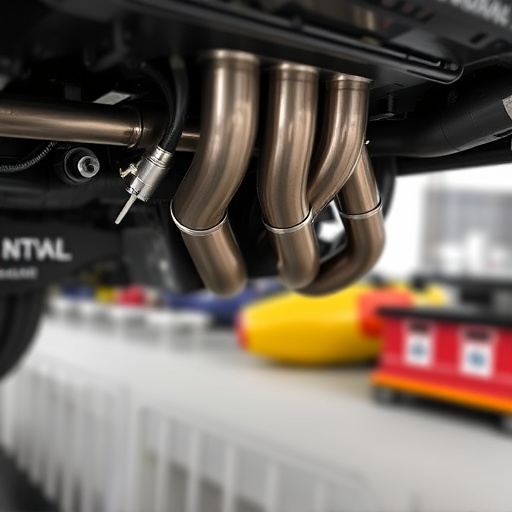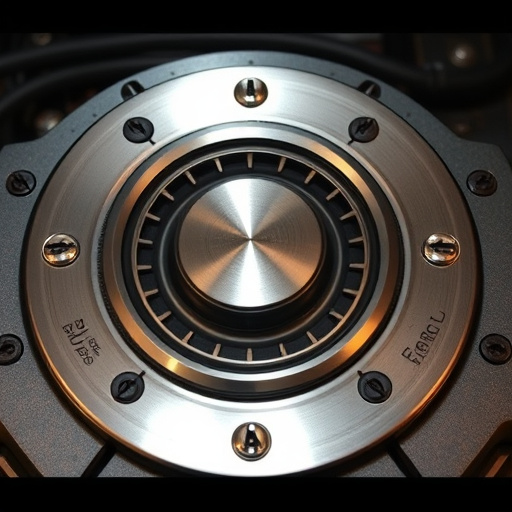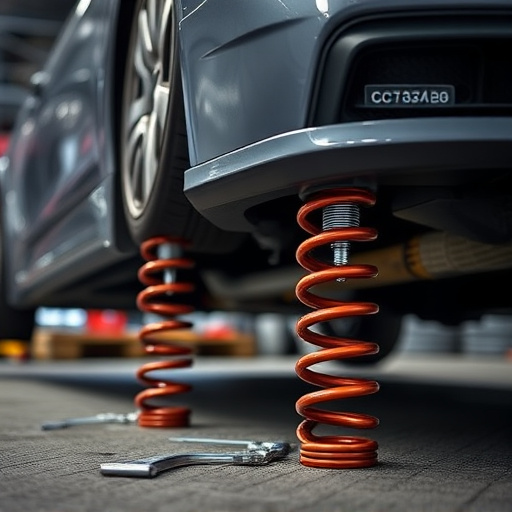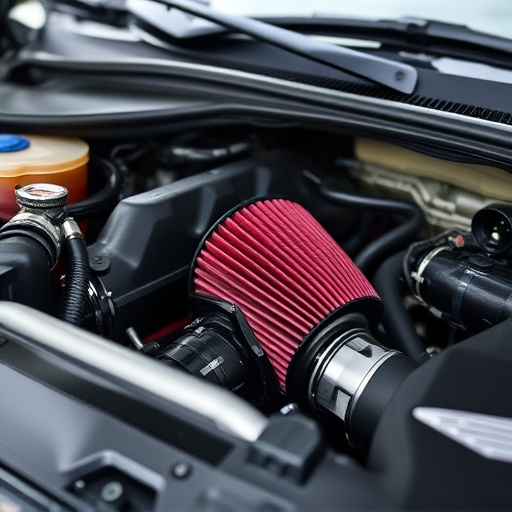Springs and shock absorbers are crucial components in a vehicle suspension system, enhancing ride comfort and handling. Springs absorb road shocks, allowing for customized ride characteristics, while shock absorbers dissipate energy from impacts, improving traction and control. Control arms facilitate wheel movement and alignment, enabling sharp turns and maintaining road contact. Modern advancements like adjustable springs and magnetic systems offer tailored performance tuning, catering to diverse driving conditions and preferences within a vehicle suspension system.
A vehicle’s suspension system is a complex network of components that ensure a smooth ride and optimal vehicle control. This critical system includes springs, shock absorbers, and control arms, each serving unique functions. Springs provide support and control vehicle motion, maintaining contact with the road surface. Shock absorbers, or dampers, smooth out road imperfections, reducing body roll and enhancing stability. Control arms facilitate wheel movement and alignment, enabling precise handling and cornering. Understanding these components is key to optimizing your vehicle’s performance and safety.
- Springs: Support and Control Vehicle Motion
- Shock Absorbers: Smooth Out Road Imperfections
- Control Arms: Facilitate Wheel Movement and Alignment
Springs: Support and Control Vehicle Motion
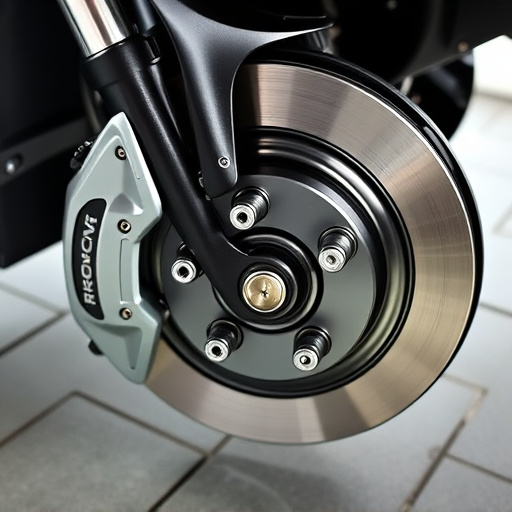
Springs are an integral part of any vehicle suspension system, playing a crucial role in supporting and controlling the vehicle’s motion. These flexible yet sturdy components work in tandem with other suspension parts like shocks and struts to ensure a smooth ride and optimal handling. They absorb impacts from road irregularities, preventing excessive vertical movement and maintaining tire contact with the road surface. By adjusting the spring rate, engineers can tailor the vehicle’s ride characteristics to suit different driving conditions and preferences, ranging from comfortable cruising to agile cornering.
While springs primarily focus on ride quality, they also contribute to overall vehicle stability and control. They help maintain proper wheel alignment, preventing excessive body roll during turns, and ensuring consistent braking performance by keeping all wheels in contact with the road. Moreover, some vehicles employ unique spring configurations, such as adjustable or magnetic springs, for enhanced tuning capabilities, focusing on both comfort and handling precision. These advancements showcase the continuous evolution of vehicle suspension systems to meet modern driving demands, from everyday commuting to track-focused performance.
Shock Absorbers: Smooth Out Road Imperfections
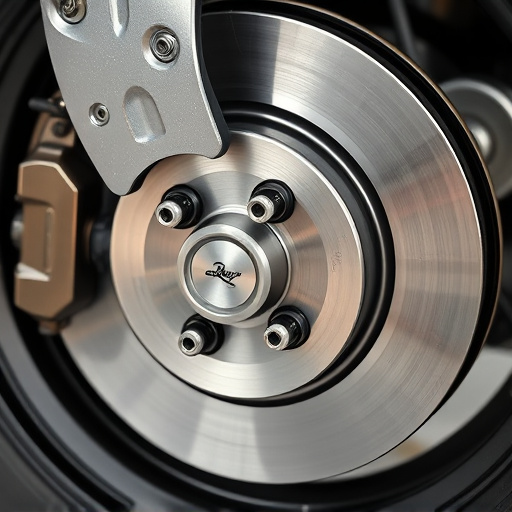
Shock absorbers are a vital component of any vehicle suspension system, playing a crucial role in ensuring a smooth ride. These mechanical devices work by absorbing and dissipating energy that would otherwise be transmitted to the vehicle’s structure from road imperfections. They act as a control mechanism, allowing for controlled deformation and subsequent rebound, thereby reducing the effects of bumps, potholes, and uneven roads.
By mitigating these disturbances, shock absorbers contribute significantly to both passenger comfort and vehicle control. They help maintain tire contact with the road surface, enhancing traction and handling, especially during cornering or sudden evasive maneuvers. Moreover, modern shock absorbers often incorporate advanced technologies, such as adjustable damping settings, to cater to different driving conditions and preferences, further refining the overall driving experience in terms of both comfort and performance.
Control Arms: Facilitate Wheel Movement and Alignment
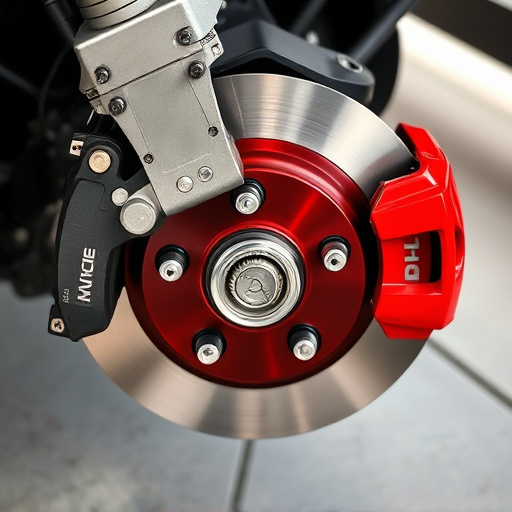
Control Arms play a pivotal role in any vehicle suspension system, acting as essential connectors between the steering knuckles and the chassis. These components facilitate the intricate dance of wheel movement and alignment, enabling smooth turns and straight-line stability. By allowing for both rotation and adjustment, control arms ensure that wheels maintain optimal contact with the road surface, enhancing handling and traction.
Beyond basic functionality, advanced control arms can contribute to improved vehicle performance, especially when paired with high-quality components like top-tier brake rotors and efficient cat-back exhaust systems. Properly designed control arms can reduce body roll during cornering, thereby enhancing overall driving dynamics and offering a more responsive and controlled ride, which is particularly noticeable in vehicles designed for both daily driving and track days.
The various components of a vehicle suspension system, such as springs, shock absorbers, and control arms, work in harmony to ensure a smooth ride and optimal vehicle handling. Springs provide support and control vehicle motion, while shock absorbers smooth out road imperfections, preventing a bumpy experience. Control arms facilitate wheel movement and alignment, ensuring the vehicle maintains its stability and direction. Understanding these functions is key to appreciating the complexity of modern vehicle suspension systems.



